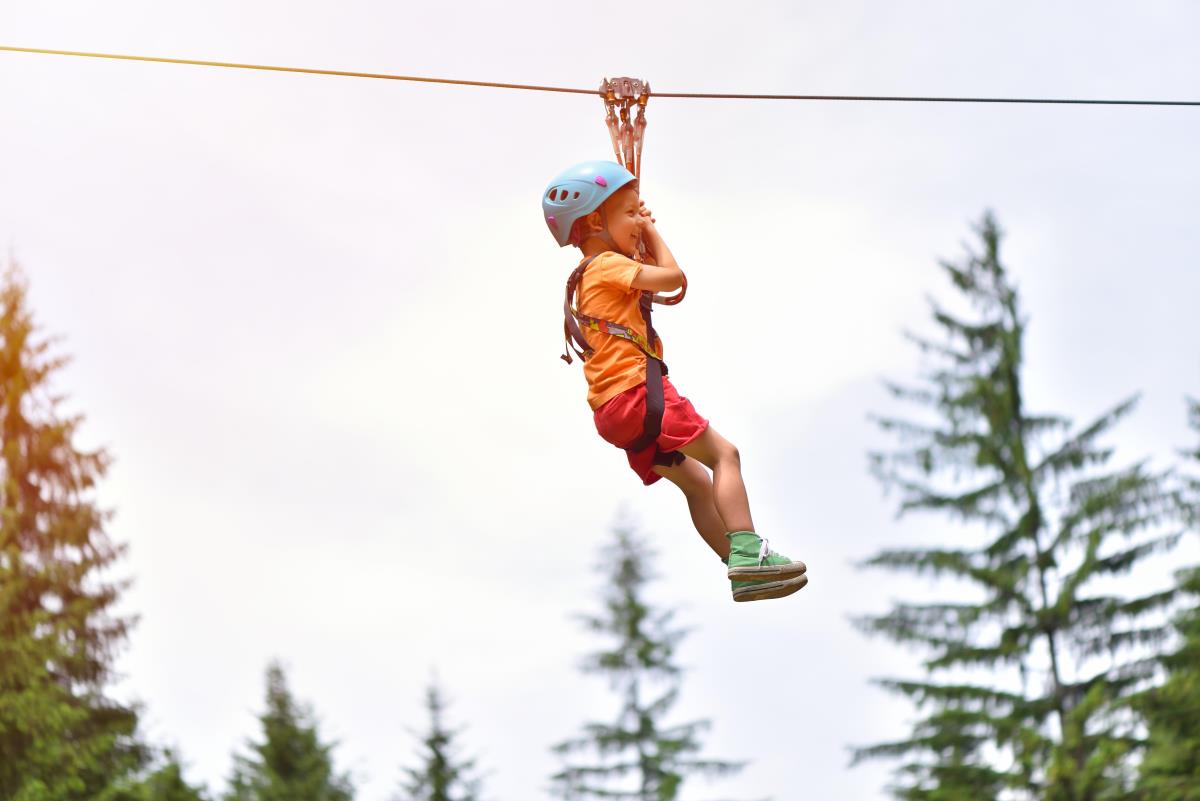Is Risky Play and Challenge Good for Children?

Caroline, Our Early Childhood Director, shares some background to risky play and looks at the opportunities and benefits of taking appropriate risks in play.
Disclaimer: Here at Bright Horizons, we understand that you're the expert on your own child or children, parenting isn't homogenous and it's each to their own. Opinions are solely there to inform and help provoke thought and reflection on parenting situations and life dilemmas that naturally have no right or wrong. Activities should always be assessed based on the risk and environment, putting health and safety first.
Injury prevention plays a key role in keeping children safe, but research suggests that imposing too many restrictions on children’s outdoor risky play hinders their development. There is a thought-provoking article, written by Kate Blincoe, where she cites a parliamentary group report on a Fit and Healthy Childhood, which led to lots of parents asking themselves how much risk they should introduce into their children’s lives. The report says that: “Risky play, involving perhaps rough and tumble, height, speed, playing near potentially dangerous elements… gives children a feeling of thrill and excitement.” Whilst we clearly don’t want to put children at risk of danger, we perhaps do need to think about this a little bit in the context of early years education and helping children to learn about their own limitations and how their bodies work.
Encouraging Children into the Great Outdoors
Largely due to advances in technology, children’s daily lives now include more sedentary indoor activities, but it is widely known there are many benefits of outdoor play and physical activity, even in the winter. Research from Play England (2006) shows that ‘age-appropriate risk’ is an essential component of a balanced childhood. Allowing children to take managed risks, such as climbing a tree or balancing on a wall, enables them to experience fear, and learn the strengths and limitations of their own body.
Appropriate Risks
The thinking is, that unless children are allowed to take appropriate risks with the support of a caring adult, they won’t know whether something is safe or unsafe when they are in a risky situation and there is no adult around to help. I wouldn’t be suggesting you drop your toddler off in the woods and just sitting back(!), but ‘appropriate risk’ is something that perhaps we should think about.
Is There Such a Thing as Being Too Safe?
With the options of padded soft play centres, and ease of entertainment such as child-friendly tablets/devices and children’s TV programmes, many children are simply not getting the opportunities to explore, challenge themselves and take risks in play. Looking back at my own childhood, I remember often playing outside in the garden or in the park with my friends and learning to take care of each other whilst we were out.
We don’t expect children to turn into Bear Grylls, but perhaps we need to consider whether the opportunities we give them to learn about their bodies and experience taking risks, are enough. A good read on how this affects children, try, ‘Last Child in the Woods’ (Louve 2005) who talks about this in some detail.
Blincoe says parents these days, ‘project-manage a schedule of activities’ for their children from a very early age and then spend their time waiting and watching, anxious in case they should slip or fall and doing their best to make sure they don’t. She says, it’s no wonder that the ‘make pretend’ risks children encounter in computer games are so exciting – the real world seems rather tame in comparison.
Risk Perception
So how can we responsibly put some of that danger and excitement back into the lives of our children? I believe that step-by-step, age-appropriate risks are important. The outdoor environment is key to this. Outdoor time every day is essential, and not just the neat and controlled environment of the play area. Consider encouraging your toddler to poke around the grass or permitting your preschooler to climb and explore.
Unsupervised time in the garden might lead to a few more cuts and scrapes or fights between siblings and friends, but it is what most of us did as children. It teaches children how to make risk-related decisions for themselves, including whether or not to share, and the ‘cause and effect’ of quarrelling with your friend or your sibling.
Risk perception is like a muscle that needs to be developed and flexed. Unless we use it, we lose it. So, to develop their risk muscles, let them climb in streams and fall over in puddles wearing their clothes; let them slide in mud or splash in puddles with no shoes on; let them go out without a coat and feel the rain on their face. It’s only water… the clothes will wash. Let them climb and dig, and generally ‘check-out’ the world around them.
Managing Risk
Our job, as the caring adult and loving parent, is to manage the risk. Checking the branch on the tree before children climb to make sure it’s strong enough to take their weight and not too high, then stepping back to allow them to make their own decisions, which will inevitably vary from child to child.
Being a parent is all about using your own judgement to decide when it's important for your children to enjoy risky play to learn and develop - and when safety needs to come first. And don’t forget to have fun yourself – join in with the risk and enjoy watching as your child discovers their abilities and learns to manage their own risks.
Remember:
“You don’t stop playing because you grow old. You grow old because you stop playing” - Oscar Wilde
Extra Resources:





